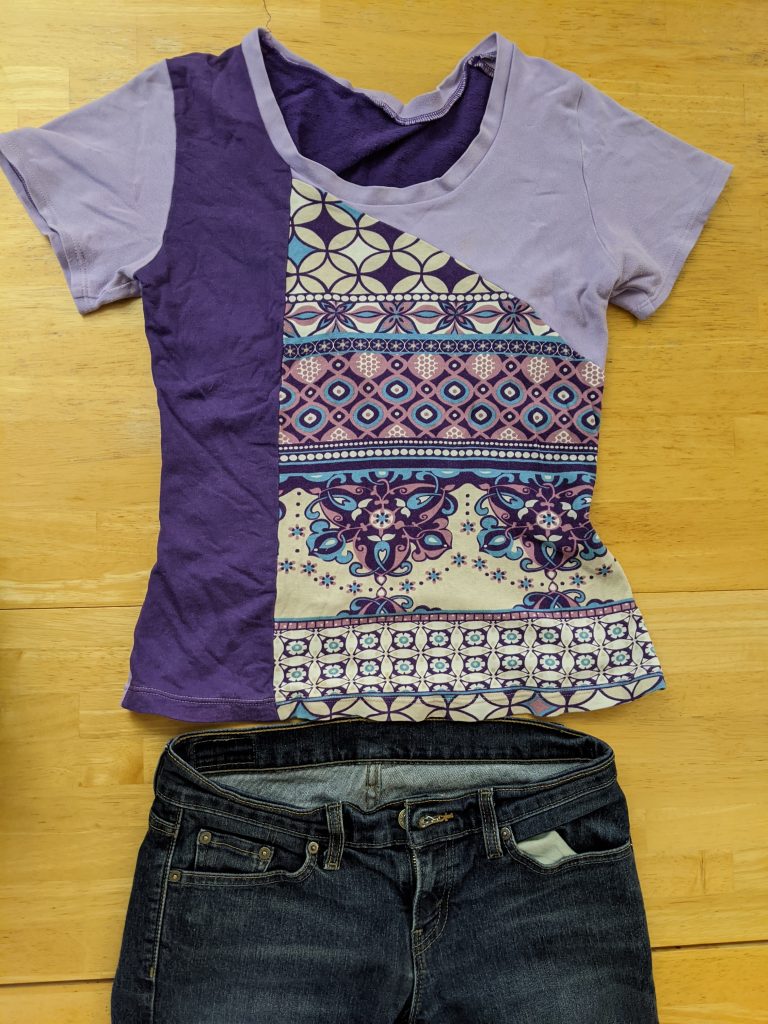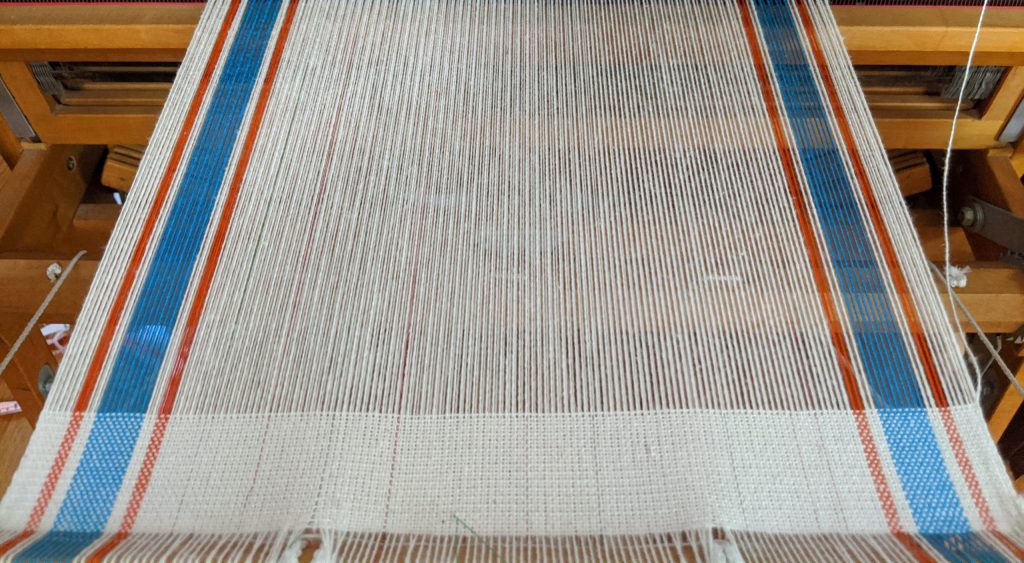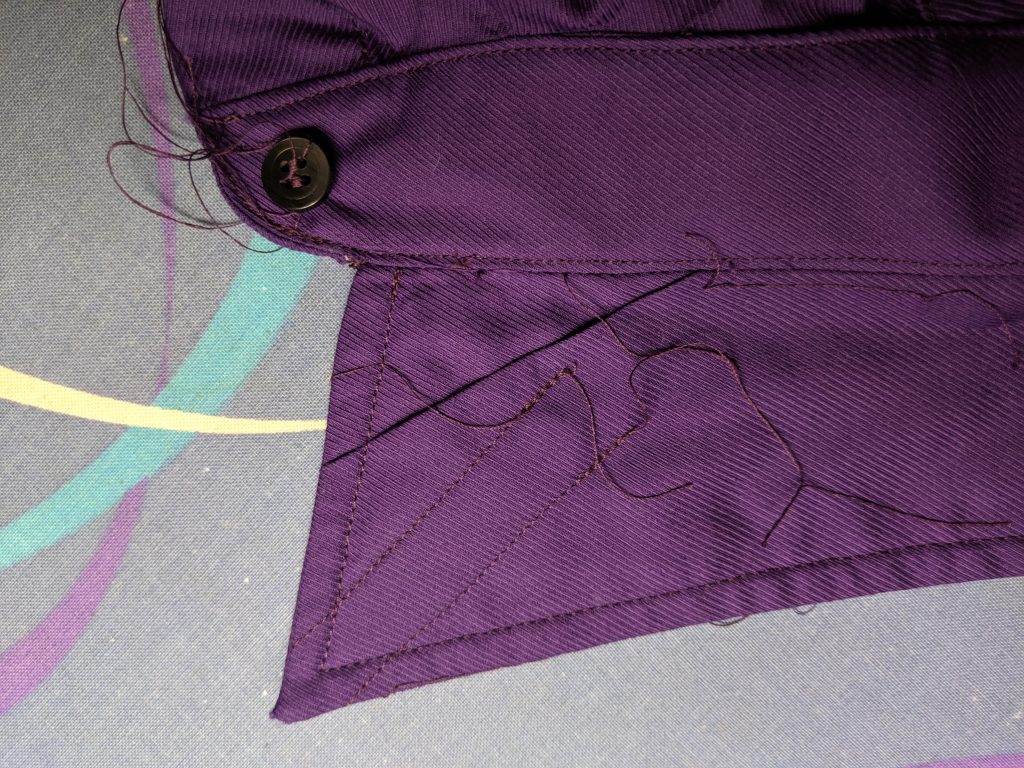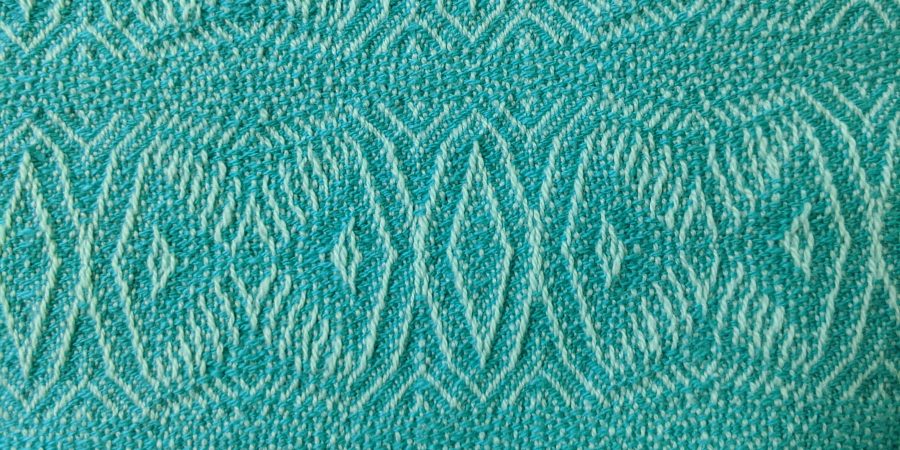I have decided to write a series of posts that describe the process of weaving. I’m also going to be posting videos on YouTube. Many people do not have the first clue how weaving works– I wouldn’t either if I weren’t a weaver! So, if you are interested in learning about how thread is turned into cloth, we will start at the very beginning.
To start understanding weaving, you must first understand cloth. Most fabric that you encounter will either be woven or knitted. There are a few other ways of making fabric, such as crochet, felting, or creating nonwoven fabric with synthetic fiber. However, the vast majority of the clothing we wear is either knit or woven.

As an example, let’s take a basic outfit, a t-shirt and a pair of jeans. The t-shirt is made of a knit fabric while the jeans are made of woven fabric. Knitted fabric is constructed using a single continuous thread. T-shirt fabric is made using the same knit stitch that a hand-knitted sweater might be made of– it is just made on a machine in much smaller yarn. The structure of knitting allows the fabric to stretch, even if the fibers that the thread is made out of are not stretchy.

Woven fabric, on the other hand, is constructed using two perpendicular sets of thread, the warp and the weft. The warp threads are held under tension on a loom, while the weft threads are interlaced with them. Unlike knits, wovens are not inherently stretchy (although they will have some give if stretched along the bias, meaning not parallel to either the warp or the weft).

Both ways of making fabric have their strengths and weaknesses. In our t-shirt example, the stretchiness of the knit means that you can fit the t-shirt over your head, so no need for any type of closure. Garments made of knitted fabric are also often easier to fit because the stretch allows a lot of leeway. For this reason, knits often need fewer seams and are therefore easier and cheaper to manufacture. However, you probably wouldn’t want your jeans to be made of a knit. Weaving can create a sturdier, more structured cloth. Knits, especially those made of natural plant fibers, often get stretched out over time, whereas a woven will maintain its shape. Wovens also much easier to sew into precise shapes, such as for shirt collars and cuffs.

Woven fabric can also have very different properties of drape and feel, depending on the weave structure and the fibers used. Cotton twill and silk charmeuse are both woven fabrics, but they have very different properties. The cotton twill, which is similar to denim, is designed to be fairly stiff, hold it’s shape, and withstand hard wear. With the silk charmeuse, the weave structure (satin) is designed to showcase the properties of silk, mainly luster and drape. You probably wouldn’t want a pair of pants made out of silk charmeuse, but it makes beautiful dresses and tops. These two examples barely touch the surface of the variety that is possible in woven cloth.

Next week, I will be talking about the beautiful machines that are used to weave cloth–looms!
